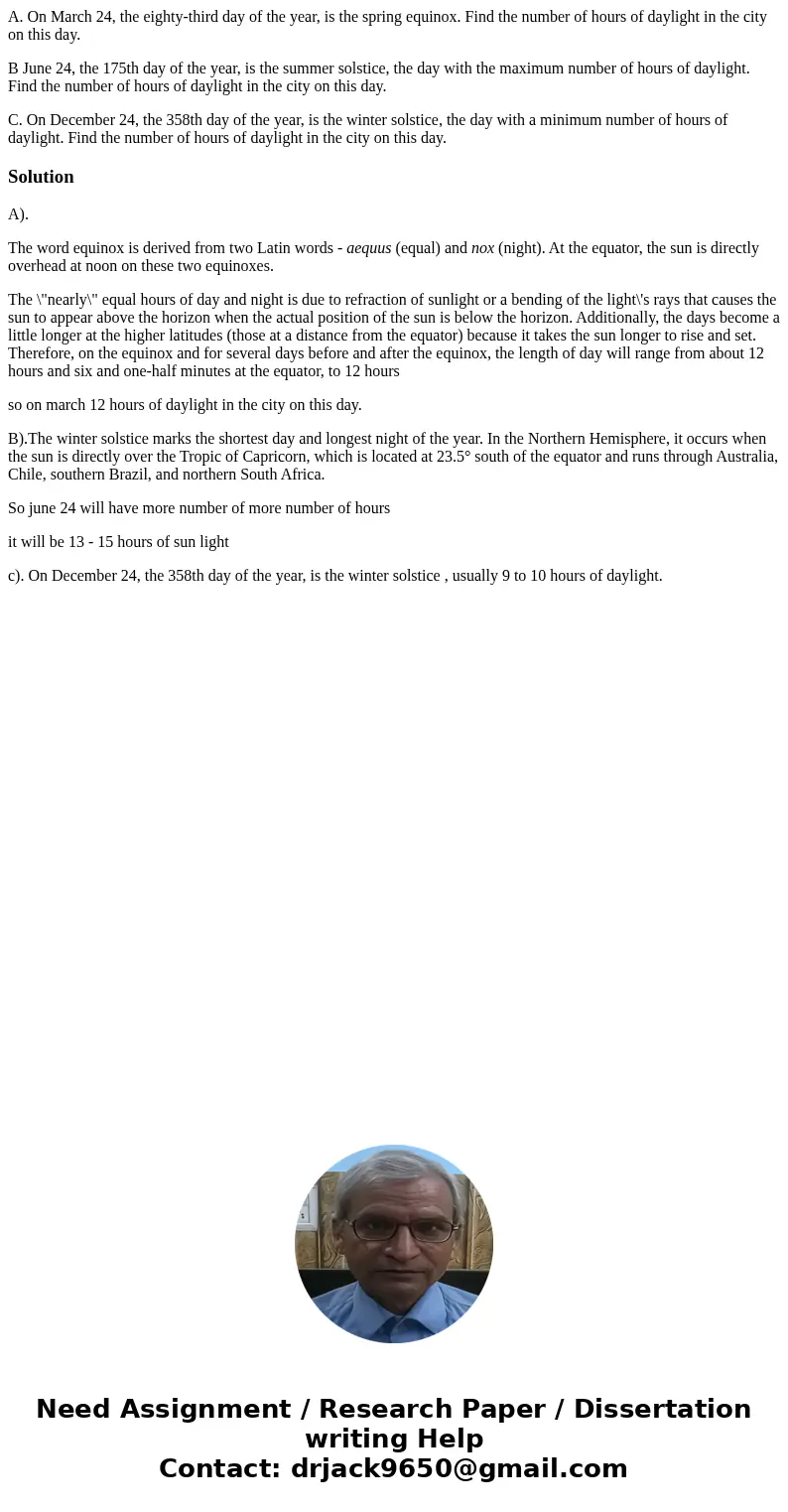A On March 24 the eightythird day of the year is the spring
A. On March 24, the eighty-third day of the year, is the spring equinox. Find the number of hours of daylight in the city on this day.
B June 24, the 175th day of the year, is the summer solstice, the day with the maximum number of hours of daylight. Find the number of hours of daylight in the city on this day.
C. On December 24, the 358th day of the year, is the winter solstice, the day with a minimum number of hours of daylight. Find the number of hours of daylight in the city on this day.
Solution
A).
The word equinox is derived from two Latin words - aequus (equal) and nox (night). At the equator, the sun is directly overhead at noon on these two equinoxes.
The \"nearly\" equal hours of day and night is due to refraction of sunlight or a bending of the light\'s rays that causes the sun to appear above the horizon when the actual position of the sun is below the horizon. Additionally, the days become a little longer at the higher latitudes (those at a distance from the equator) because it takes the sun longer to rise and set. Therefore, on the equinox and for several days before and after the equinox, the length of day will range from about 12 hours and six and one-half minutes at the equator, to 12 hours
so on march 12 hours of daylight in the city on this day.
B).The winter solstice marks the shortest day and longest night of the year. In the Northern Hemisphere, it occurs when the sun is directly over the Tropic of Capricorn, which is located at 23.5° south of the equator and runs through Australia, Chile, southern Brazil, and northern South Africa.
So june 24 will have more number of more number of hours
it will be 13 - 15 hours of sun light
c). On December 24, the 358th day of the year, is the winter solstice , usually 9 to 10 hours of daylight.

 Homework Sourse
Homework Sourse